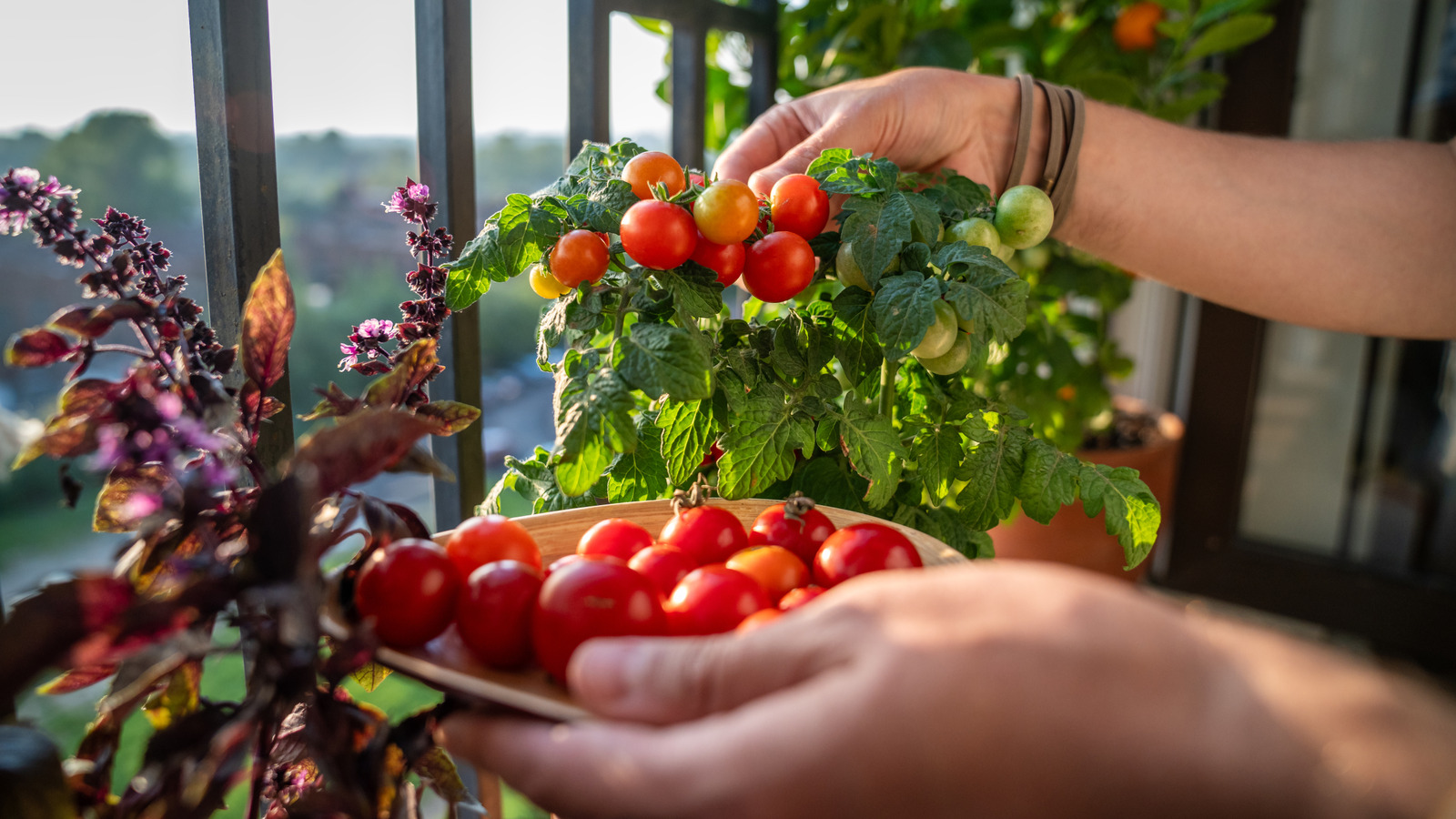There are few duos as classic and complementary as tomatoes and basil. Living proof of the phrase “what grows together goes together,” these monarchs of summer-produce royalty are so commonly paired that it can be difficult to picture one without the other, especially in Italian cuisine. Growing tomato and basil plants alongside one another isn’t just aesthetically pleasing, it’s benefitial, too. If you’re a tomato grower, the best thing you can do for your fruits is to provide them with basil as a companion plant, as it helps to yield more tomatoes, repel pests, boost pollination and might even enhance flavor.
Companion planting is the act of intentionally growing specific herbs, fruits, flowers, and vegetables together in a mutually beneficial way. With the right combinations, the practice is known to keep garden pests away, bolster the nutrients of your overall soil, as well as support other plants in their growth. In addition to basil, some other helpful companion plants for tomatoes are parsley, marigolds, carrots, lettuce, and alliums.
Grow and eat basil and tomatoes together
The sweet, herbaceous aroma of basil can repel pests like aphids and tomato hornworms, and also acts as a natural insect repellent for mosquitoes and flies. Contrastingly, basil flowers attract important pollinators like butterflies and bees, which is great for the overall health of your garden and can increase the yields of tomato plants. Many gardeners swear that basil plants near their tomatoes improve their flavor. Although this is anecdotal and not backed by science, it’s possible that increased pollination and decreased pests will improve the general health of the tomato plant and so lead to more flavorful fruits.
Basil and tomatoes both share the same growing needs, like full sunlight, warm temperatures, and moist, well-drained soil. The roots of a delicate basil plant are shallower than the deep roots of a tomato plant, so you don’t have to worry about them competing for nutrients. Growing your own food can be a daunting prospect, especially for apartment-dwellers lacking backyards or raised garden beds. But it’s easy to start small with your own edible garden, even if you only have a windowsill to support your homegrown farming efforts, as tomatoes and basil can be grown in pots indoors in the proper conditions.
If you’re looking for more tomato-growing tips, sprinkling the soil with baking soda lowers a tomato plant’s acidity levels and makes homegrown tomatoes sweeter. Then once you’ve got your first sweet and juicy tomato harvest, we have plenty of tricks to make your tomatoes even more delicious – and don’t forget to pluck a few of those basil leaves to eat with your produce, too.






